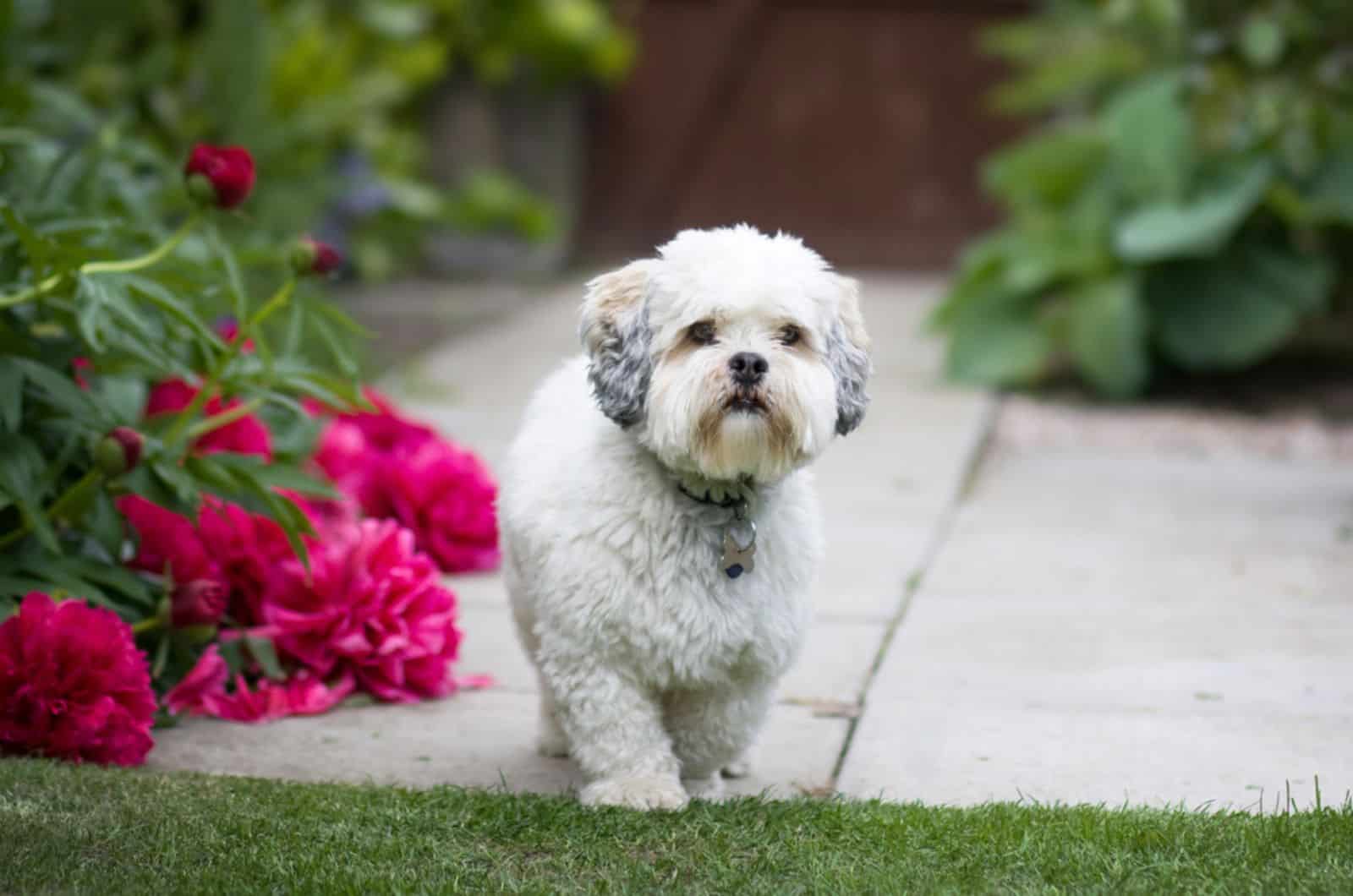Originating from Tibet, where they served as prized watchdogs inside the temples and places of worship of their mountainous area, the Lhasa Apso is a small, cute Tibetan dog breed.
The Lhasa of today no longer serves as a royal guard, but is instead a devoted family member that guards them against harm.
Despite being purebred canines, you might find them in shelters or with rescue organizations.
Despite its diminutive size, the short hair Lhasa apso is a strong and independent dog. These puppies get along nicely with new pet parents, and can adapt to almost any home, including apartments.
They might test your leadership, though, if you don’t maintain a strict, regular training program. You can have a devoted, jovial family member if you can provide for the demands of the breed.
What Is A Short Hair Lhasa Apso?
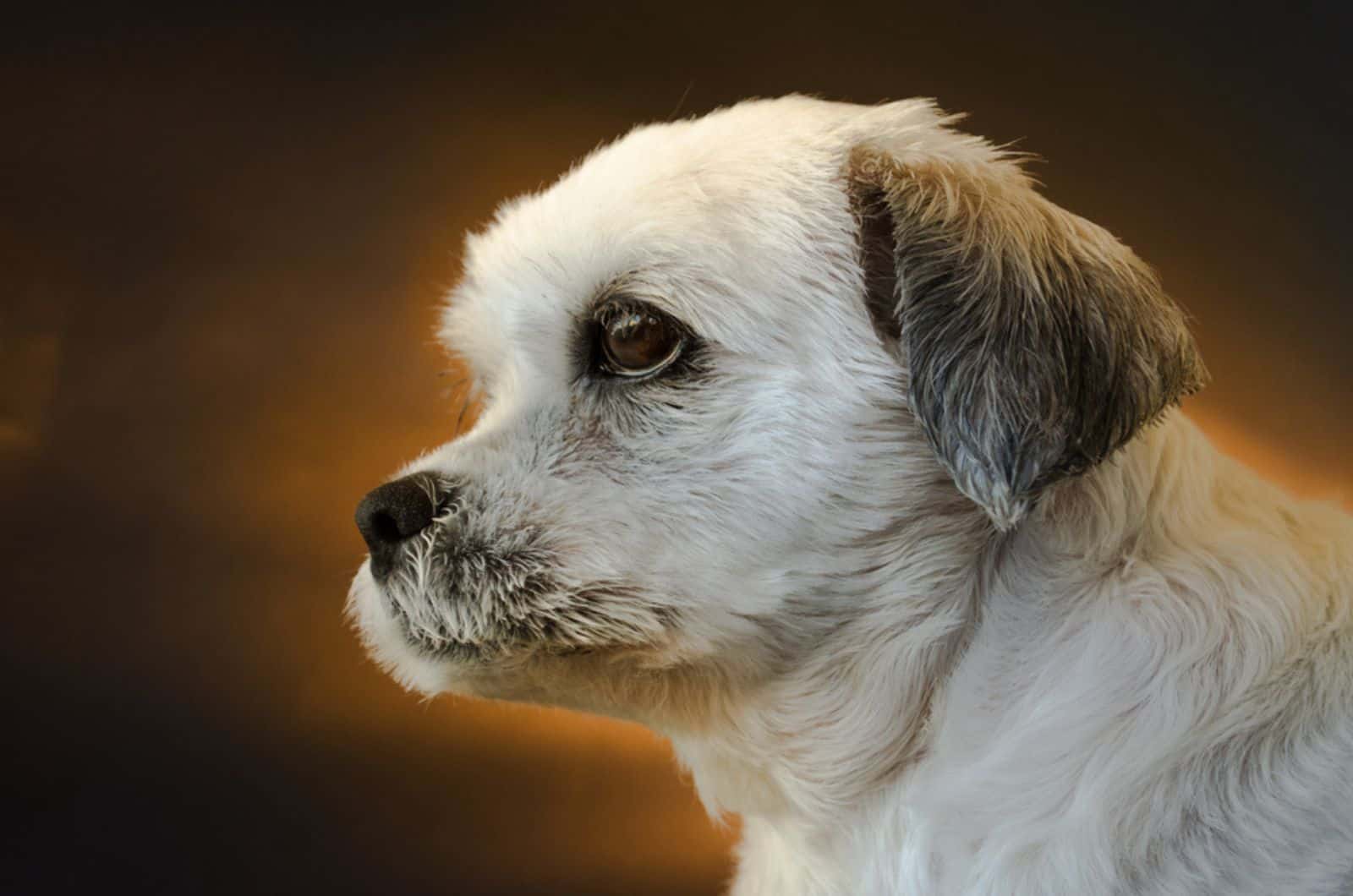
Lhasa Apsos are renowned for having a lovely, silky coat that needs frequent maintenance.
But, what distinguishes a Lhasa Apso with a long coat from one with a short coat? Generally speaking, short-coat Lhasa Apsos have a coat that is only 1 to 2 inches in length and split into two portions in the center, falling over both sides of their body.
Lhasa Apsos that are used for shows typically have long, flowing hair that may be treated in a variety of ways, while the short hair Lhasa Apsos usually don’t go for competitions.
Although maintaining a Lhasa Apso’s coat is difficult, there are different haircuts that may be used to reduce the need for the breed’s traditionally expensive fur maintenance.
Can Lhasa Apsos Have Short Hair?
Since there has been a burning question in the Lhasa Apso community about the notion that there may be short-haired Lhasa Apsos, we have decided to give our input.
Short-haired Lhasa Apsos are nothing more than Lhasa Apsos that have had their coat shaved or trimmed. There is not a specific dog breed or subtype of Lhasa Apso that has a shorter coat than the rest of the dog breed.
However, some short-haired Lhasa Apso dog breeders have reported that in some litters of constantly shaved and trimmed Lhasa Apsos, short-haired Lhasa Apsos were born.
That could potentially mean that their genes were somehow manipulated into bringing short-haired Lhasa Apso puppies into the world.
By now, they are not described as a new dog breed, but in the future… who knows.
Origin Of The Short Hair Lhasa Apso
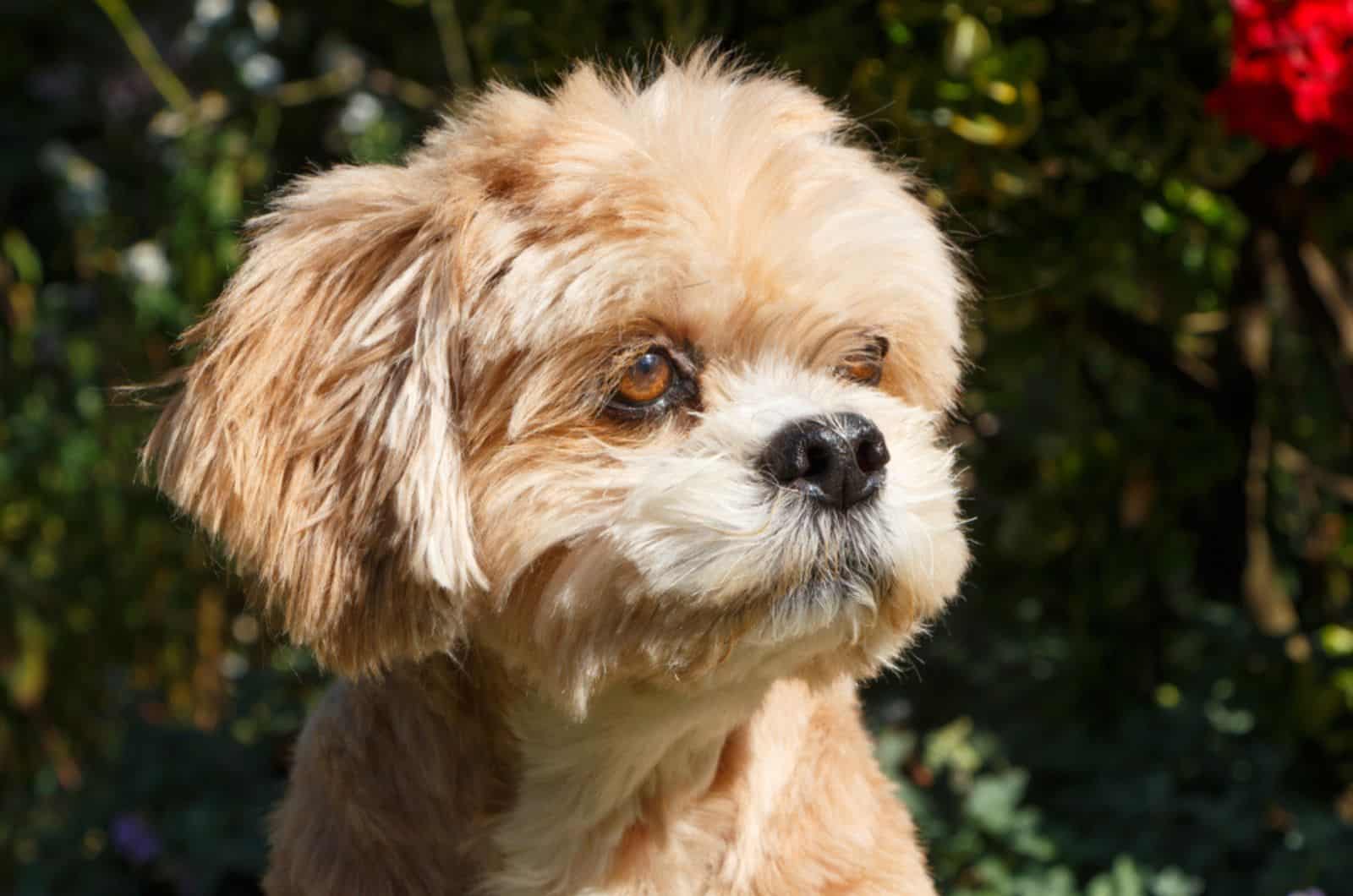
The sacred city of Lhasa is where the Lhasa, which hails from Tibet, gets its name. The Lhasa Apso was originally raised solely by royalty and priests in monasteries for hundreds of years to serve as an indoor guard and watchdog.
Abso Seng Kye, which roughly equates to “Bark Lion Guard Dog,” is his name in his native country. Because of the severely cold temperatures of its native country, the Lhasa’s heavy coat serves as protection.
The breed’s history has been documented since 800 B.C. A Lhasa was seen as lucky, but it was practically impossible to purchase one because he served as a sacred guardian in monasteries and shrines.
It was believed that when the owner passed away, his spirit inhabited the Lhasa Apso’s body. Apart from when they were offered as presents by the Dalai Lama, Lhasas were not prevented from leaving the nation.
The Dalai Lama gave sacred Lhasas to the Chinese Emperor and individuals of the Royal bloodline starting in 1583, at the start of the Manchu Dynasty, and continuing until 1908 at the latest.
It was customary to offer the Lhasas in couples, and it was believed that they would convey fortune and luck alongside them.
The 13th Dalai Lama presented the renowned global explorer and biologist, C. Suydam Cutting, with the very first Lhasas to arrive in the United States in 1933 as presents.
The two dogs that Cutting received as gifts served as the breeding stock for his kennel, Hamilton Farm, which was located in Gladstone, New Jersey.
The Lhasa Apso was recognized as a breed by the AKC (American Kennel Club) in 1935.
What Does A Short Hair Lhasa Apso Look Like?
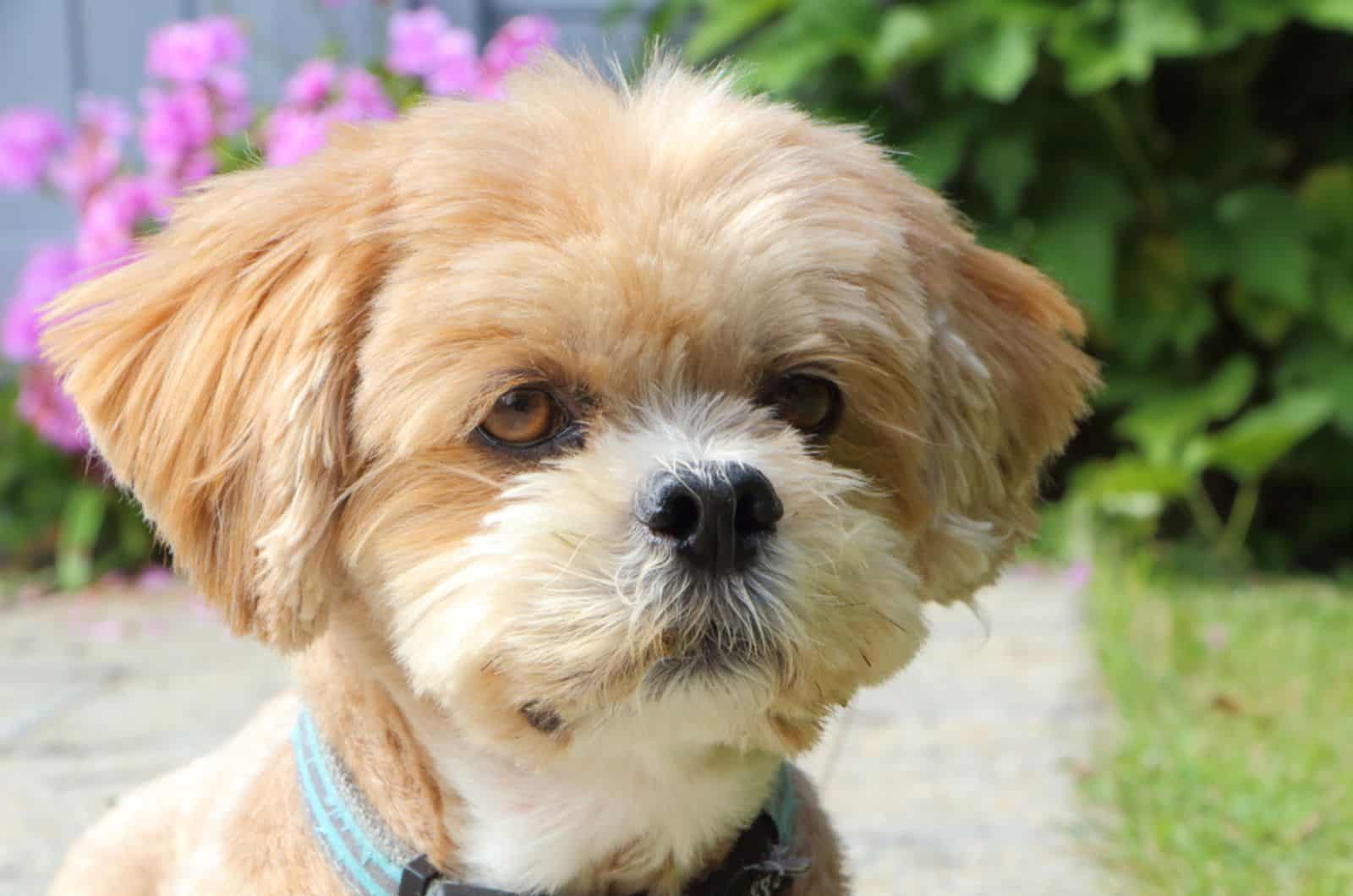
Their tail is wrapped over their back, and their head is lifted high, making them longer than they are tall. The various ends may resemble one another when these canines are sporting their full show coat!
The ears droop down in elegant folds of short hair, giving the head a spherical appearance. One of the characteristics that sets the Lhasa Apso apart from other breeds is its fluffy, heavy, and dense coat.
There is a large beard and a fall of hair that may cover the eyes. A modest shortening of the muzzle causes an undershot bite.
Males are slightly taller than females, standing from 10 to 11 inches in height, and weighing from 13 to 15 pounds.
Lhasa Apso Haircuts
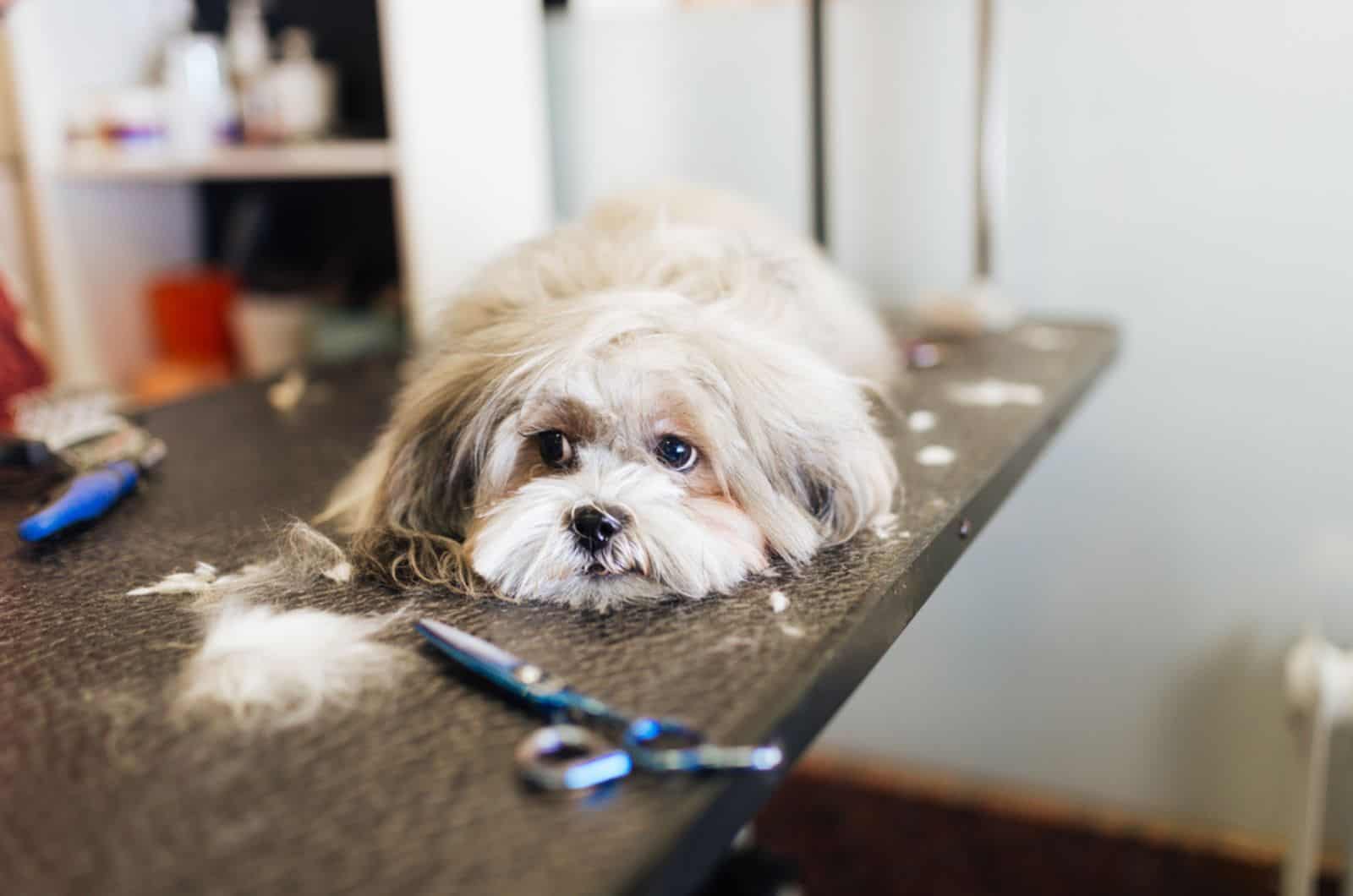
Grooming a Lhasa Apso’s coat takes a lot of effort and repetition. In addition to being long, it quickly grows longer after being clipped.
So, practice patience. The selection of haircuts and hairstyles that are provided below can help you decide what you would like the Lhasa Apso to look like.
1. Puppy cut
Similar to the short haircut, this style of haircut is only a tiny bit longer. Some dog owners prefer this style of their dog’s hair in order to keep their Lhasa Apso appearance. It will continue to look fluffy, and regular grooming keeps the fur soft.
2. Short Haircut
For lazy people like myself, it is best to get a haircut like this. This haircut is appropriate for your Lhasa Apso if you don’t want to brush it every day or give it a thorough grooming every month. This is the type of cut that Poodles often get, too.
Keep the top and undercoat of the entire coat at 1 to 2 inches in length. However, you cannot begin cutting its hair until he is 10 months old.
3. Long Haircut
The most demanding haircut of all requires a lot of upkeep. To prevent tangles, it needs to be brushed and regularly groomed.
Start giving it regular baths when it is small so that it will become accustomed to them. You’ll need to be ready for more challenging chores when it gets its double coat, which won’t happen until it is an adult. This is most common for Lhasa Apsos that are used in dog shows.
Most Popular Lhasa Apso Hairstyles
These would definitely include the top knot, the ponytail, the bun, pigtails, as well as many other DIY hairstyles.
What Kind Of Personality Does The Lhasa Apso Have?
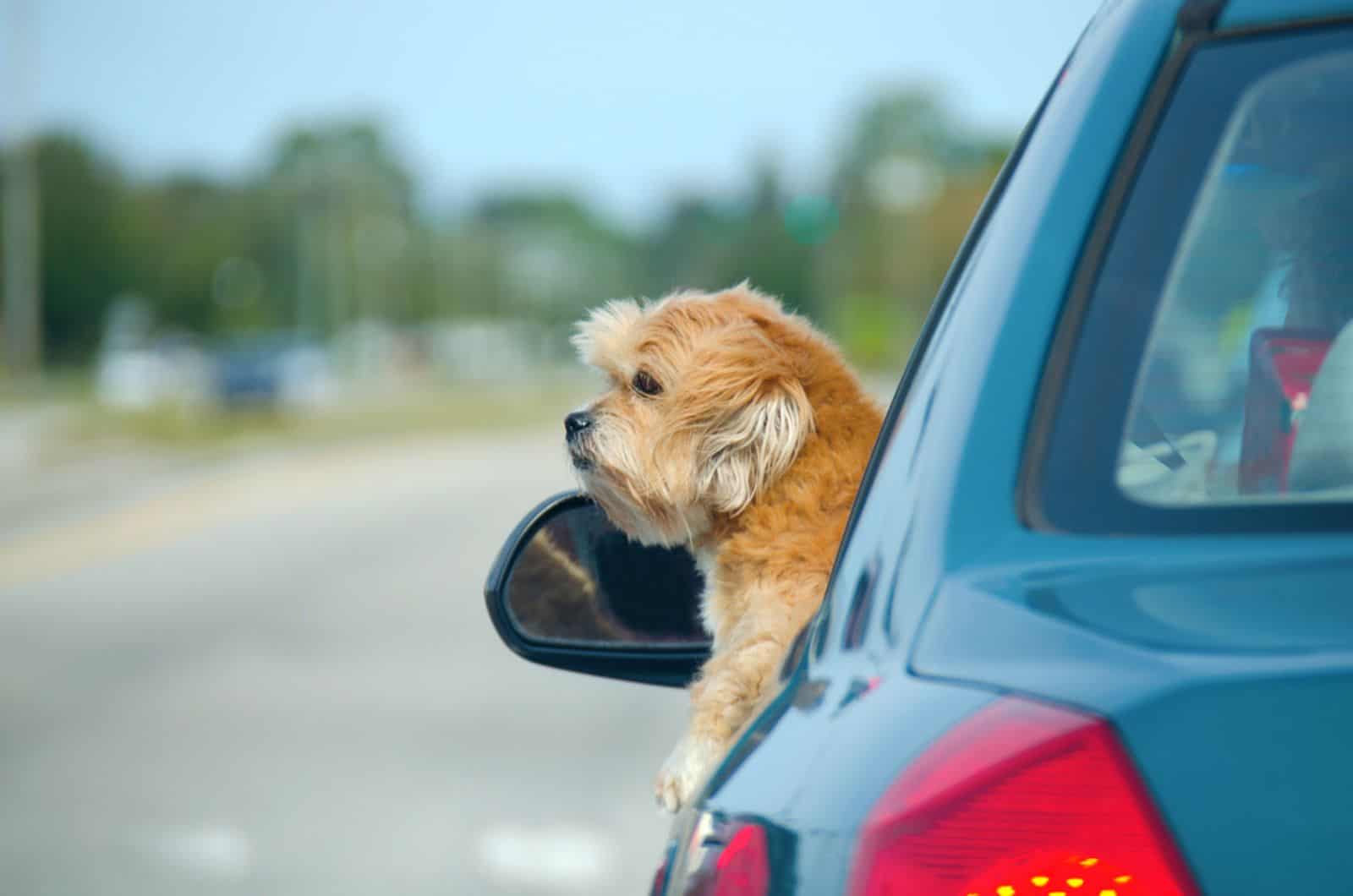
The short hair Lhasa Apso perceives itself as being a big dog. The contemporary Lhasa lives its life in the same manner as his ancestors did: as a devoted protector of the home and its family. It was developed for several hundred years to serve as a royal watchdog.
Given his tiny stature and silky coat, the Lhasa might surprise those who are inexperienced with it by being so watchful. It certainly doesn’t really seem intimidating.
The Lhasa, while never being overly aggressive, is fierce whenever it comes to defending its territory. It instinctively distrusts strangers, which is a great quality for a royal guard, and it considers its responsibility as a guard thoroughly.
The truly brave Lhasa’s dedication also manifests in its enjoyment of family life. It is clever, self-reliant (a watchdog should decide for himself, doesn’t it), and cunning.
With its sparkling eyes and silky fur, the Lhasa puppy is one of the cutest puppies around. These young puppies are active, intelligent, and overflowing with curiosity.
The Lhasa Apso takes a while to grow, and is still quite puppylike at two years old. While raising Lhasa Apso puppies, new owners should be mindful so they don’t get irritated when the dog doesn’t take a thing or two seriously. Housetraining can be challenging; thus, crate training is advised.
Short Hair Lhasa Apso Around Kids
What about kids and Lhasa Apsos? Be cautious that the breed is notorious for becoming irritated by children’s typical clumsiness; it may nip.
He bonds more strongly with adults than with children, but this isn’t a set rule. The Lhasa can live well with older kids or younger kids who are very gentle with dogs.
The Lhasa is generally not a smart choice if you’re looking for a “child dog” exclusively.
The Lhasa prefers to be near his family, and will accompany them from one room to another to participate in their activities or to sit on their laps. They are funny dogs, but they are not nearly as patient as, for example, Golden Retrievers are.
He is, however, OK when left home alone for a respectable period of time due to his independence. The Lhasa typically doesn’t experience separation anxiety.
Numerous elements, including training, socialization, and heredity, have an impact on temperament. Puppies with good dispositions are interested and playful, approachable, and want to be cuddled.
Select a puppy that is in the midst of the pack rather than one that is bullying its littermates or cowering in a corner.
Definitely visit at least one parent to make sure they are pleasant and comfortable around you. Typically, the mom is the one that is accessible. It’s also beneficial to meet the parents’ siblings or other family members to get a sense of what the pup will resemble as an adult.
Is The Short Hair Lhasa Apso A Healthy Dog Breed?
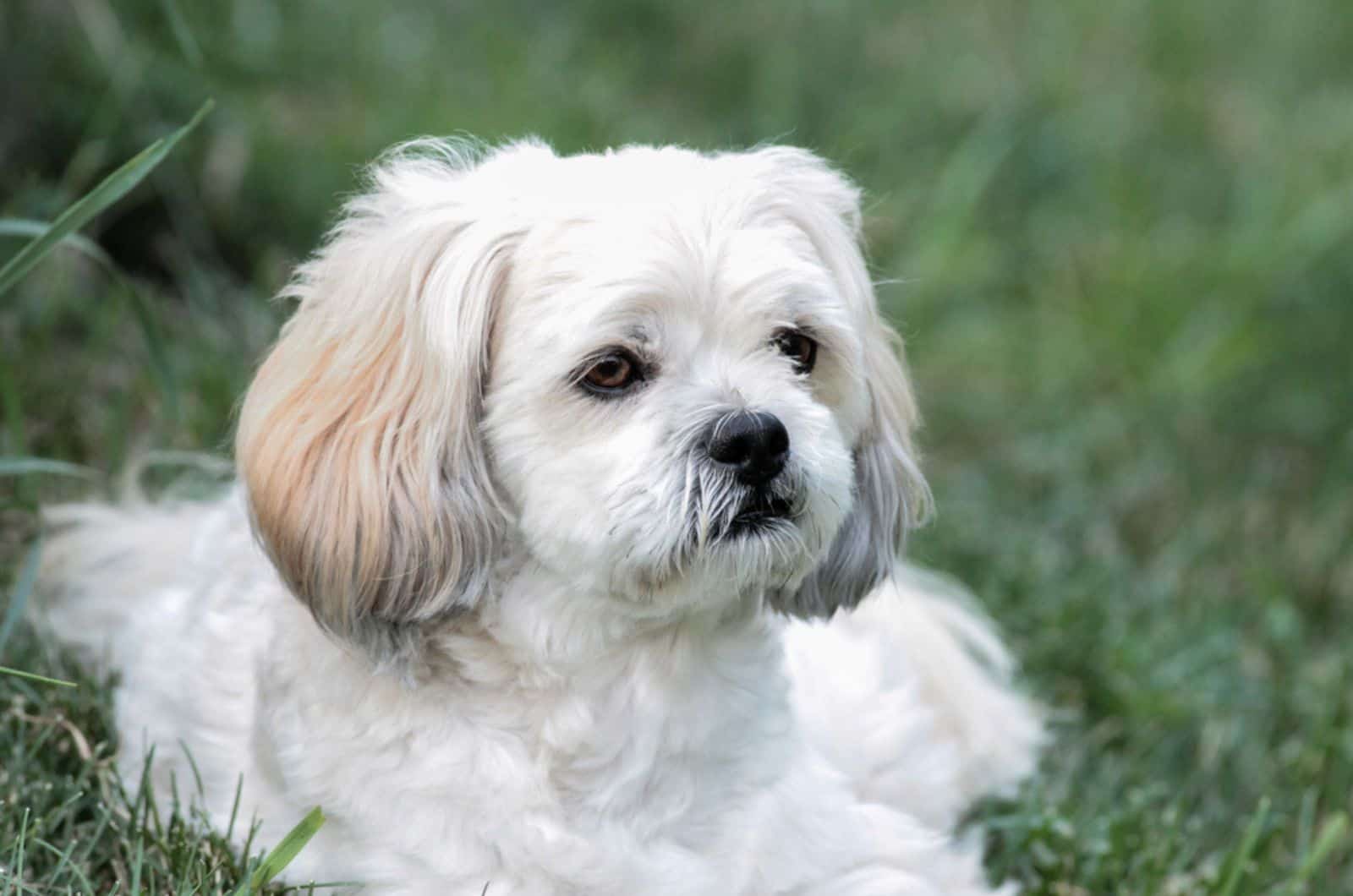
Although Lhasa Apso dogs are typically healthy, they are susceptible to some health issues like all breeds. While not all Lhasas may contract one or more of these illnesses, it’s essential to be conscious of them because you’re thinking about getting one.
Find a reputable breeder who will provide you with the health certifications of both of your puppy’s parental figures if you are purchasing a puppy. Health certifications attest to a dog having undergone testing and being declared free of a specific ailment.
You could perhaps anticipate seeing health certificates for von Willebrand’s disease, autoimmune diseases, hip dysplasia, elbow dysplasia, as well as thrombopathia from the Orthopedic Founding for Animals (OFA), thrombopathia from Auburn University, as well as approval for healthy eyes from the Canine Eye Registry Foundation (CERF).
Studying the OFA website will allow you to verify health approvals.
Possible Health Issues Of The Short Hair Lhasa Apso
As in any dog breed, these Teddy bear-like dogs do have some possible health issues that you may have to take a closer look at.
You have to take good care of your companion dog; therefore, you should invest a lot of time in examining and making sure that your doggy is healthy.
1. Allergies
Dogs frequently suffer from allergies, and the Lhasa Apso is not an exception. Three basic categories of allergies exist: food sensitivities, which are managed by removing particular items from the diet of the dog.
Contact allergies are brought on by an allergic response to a substance that is applied topically, such as flea spray, dog shampoo, as well as other toxins.
Airborne allergens including dust, dirt, and mold are what cause inhalant allergies. The course of treatment depends on the underlying reason, and may involve dietary changes, medication, and environmental modifications.
2. Progressive retinal atrophy (PRA)
This group of eye conditions causes the retina’s progressive degeneration. Affected dogs initially develop night blindness; as the illness worsens, they begin to lose their daytime vision.
Many affected dogs adjust to their diminished or lost vision well as long as their environment doesn’t change.
3. Sebaceous Adenitis (SA)
Dogs have a severe issue with this. Because it is challenging to diagnose, hypothyroidism, hypersensitivity, and other illnesses are frequently misdiagnosed for this inherited skin condition.
The skin’s oil glands become irritated in dogs with Sebaceous Adenitis for unexplained causes, and they eventually die. Dogs with the condition often have rough, flaky skin and hair loss on their back, neck, and top of their head.
The skin of severely affected dogs may thicken, and they may also smell bad and develop secondary skin diseases. Although the issue is mostly cosmetic, the dog may find it uncomfortable.
4. Knee (Patellar) luxation
This issue, sometimes known as sliding stifles, affects tiny dogs frequently. The kneecap is the patella, and anatomical portion dislocation is referred to as luxation.
Patellar luxation is a painful condition in which the knee joint (typically of the back leg) moves in or out of place. Although many dogs with this illness live quite a normal life, it can be devastating.
Maintenance
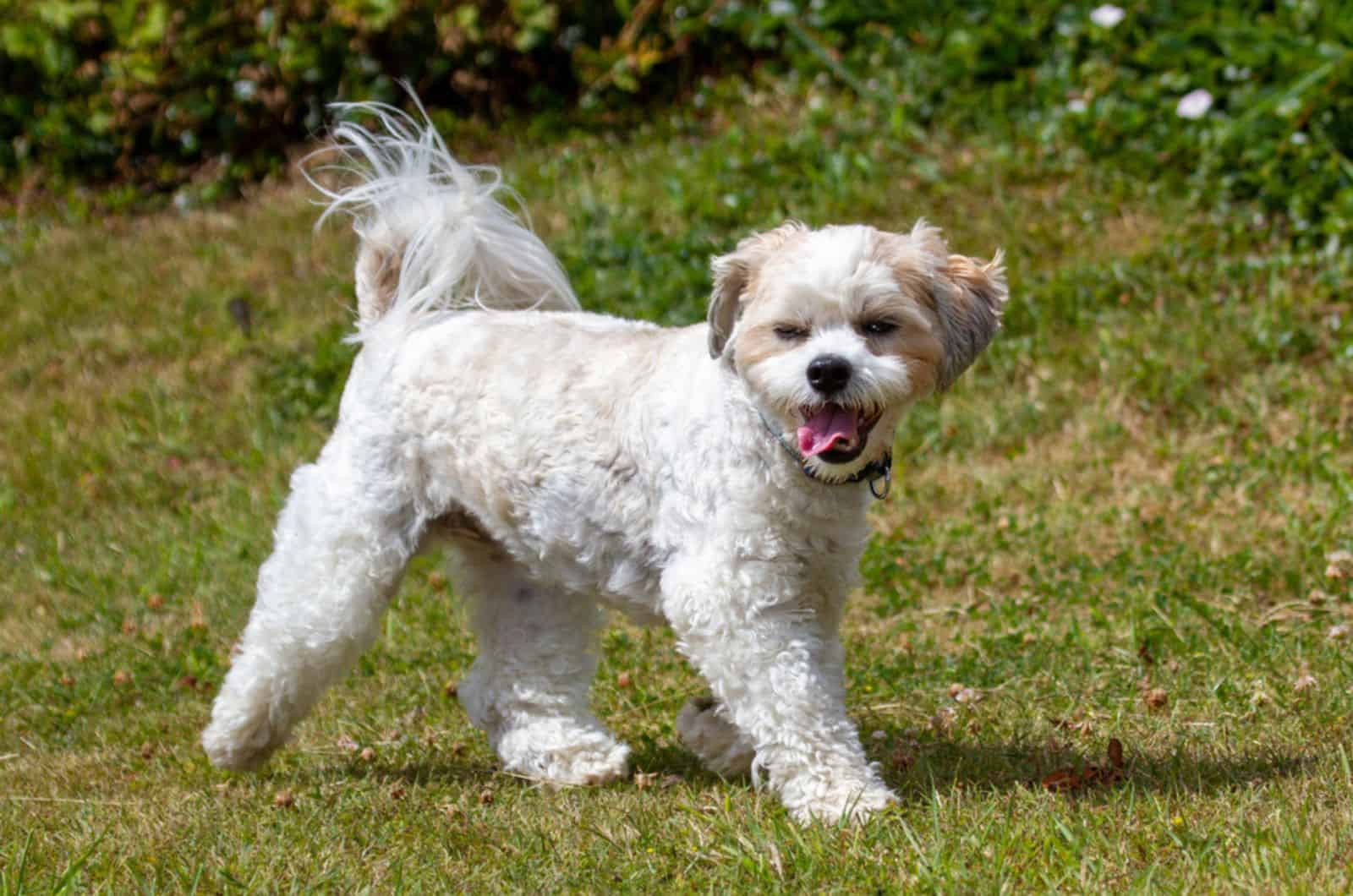
For those who have little room, the short hair Lhasa Apso is a fantastic option. It would do well in an apartment or condo, although he likes to play in a fenced-in yard.
The Lhasa is happy taking a few quick walks every day.
The short hair Lhasa Apso isn’t a high-energy dog, and on cloudy weather days, when it is caged up, it doesn’t frequently bounce off the walls. It loves playing with its toys, exploring the house, sitting on your lap, and letting you know when someone approaches.
It is advisable to crate train the short hair Lhasa Apso because housebreaking it can be difficult. Also, keep in mind that this dog’s mental development will probably take a while.
Around one year of age, it may grow to its full size, but its demeanor will continue to be extremely puppy-like. Throughout training, be very patient; maintain a positive attitude, be persistent, and be prepared to put in the time.
Feeding A Short Hair Lhasa Apso
It is advised to have two servings daily, each consisting of 3/4 to 1 cup of high-quality dry dog food.
Worth noting: Your adult dog’s appetite is influenced by its size, gender, shape, digestion, and degree of exercise. The same as with people, each dog is unique; thus, they don’t all require the same quantity of food.
A very active dog will require much more dog food than a lazier dog, which should practically go without mentioning.
It also matters what kind of dog food you choose because the finer the food, the more effectively it will nourish your pup.
Instead of having food available all the time, keep your Lhasa in excellent condition by feeding it twice a day and weighing his meal. Do the hands-on and the eye test if you’re not sure if he’s obese.
Try to look down at him first. There ought to be a waistline visible. After that, position your hands over its spine, with your thumbs pointing down its spine and your fingertips stretched outward.
Without exerting much pressure, you should be able to feel his ribs but not see them. If you can’t see them, then he requires less eating and much more activity.
Pet Grooming Needs
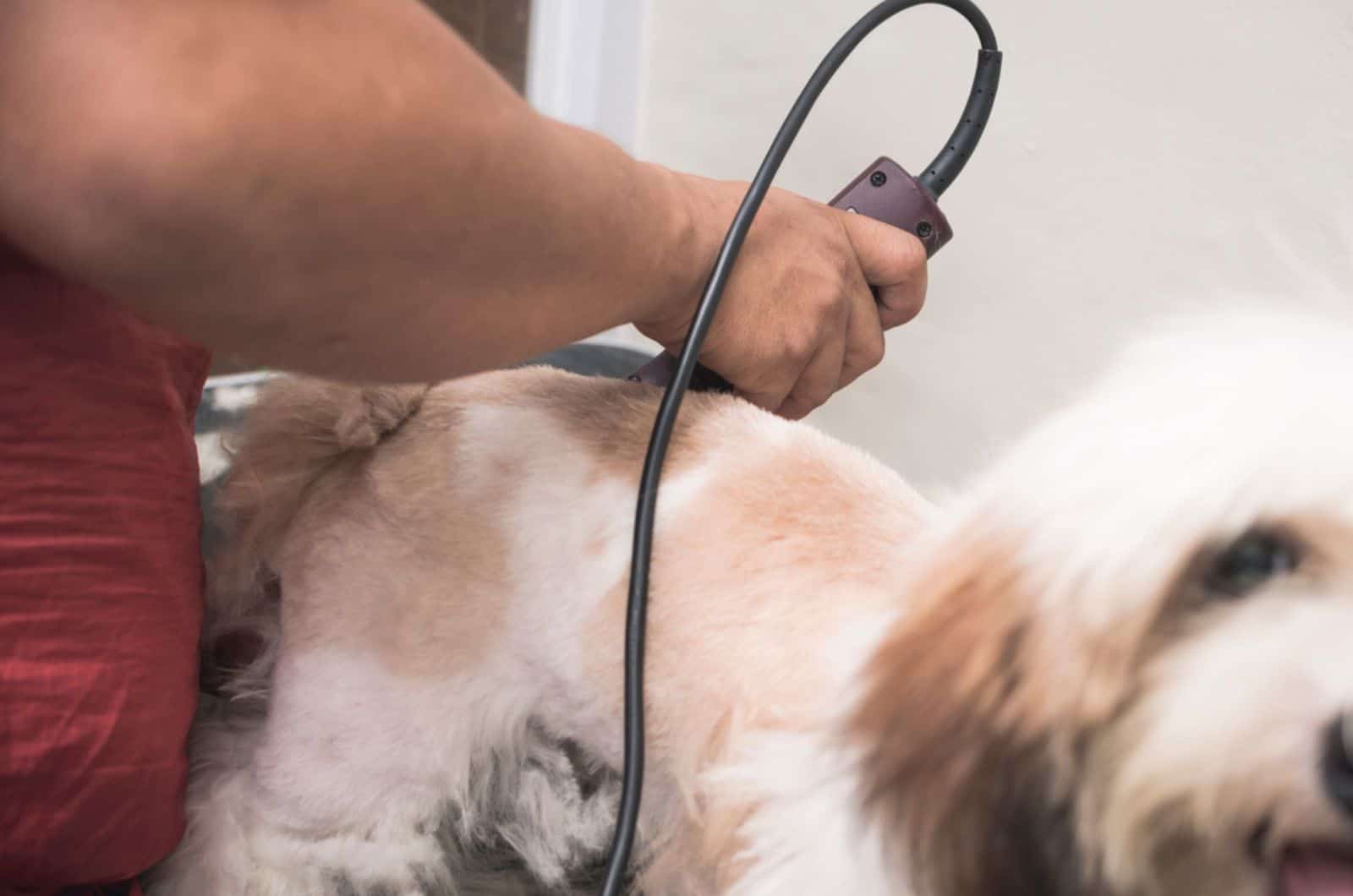
Let’s talk about that gorgeous, silky, and thick Lhasa coat. Additionally, keeping it in good condition is a hassle. It must be brushed and combed frequently to stay untangled. Lhasa Apso Grooming is a challenge; that has been said by every Lhasa Apso owner, ever.
For the Lhasa to maintain its lovely scent, frequent bathing is also required. Some pet owners choose to shorten the coat or cut the facial hair.
If you’re thinking of getting a Lhasa, be aware that you’ll need to groom it frequently and that you’ll get to know the groomer by name.
The Lhasa fur is exquisite. It typically has a long, flat, and thick shape. It is available in a variety of hues, which include parti-color, caramel, black, white, and gray. Make sure to check all of the Lhasa Apso Coat colors!
Nevertheless, maintaining the Lhasa coat’s beauty takes effort and patience. Brushing and combing, even on a daily basis, are important.
Although a diligent owner may learn to maintain the Lhasa’s coat, it’s definitely not a chore for amateurs; therefore, many owners choose to employ a professional groomer.
In order to reduce grooming duties, owners frequently have the Lhasa’s coat cropped short. What’s left is far simpler to maintain than the lovely flowing coat that was there before.
Also, always have a detangling spray somewhere near you. You’ll need it, especially if you have a long-haired Lhasa.
Taking Care Of Nail Trimming, Teeth Brushing And Ear Cleaning
To get rid of plaque accumulation and the germs that live inside of it, scrub your Lhasa’s teeth at minimum twice or three times every week. Twice-daily brushing will prevent foul breath and gum disease.
In order to avoid unpleasant tears and other issues, trim your dog’s nails either once or twice per month if they don’t wear down naturally. They are excessively long if you notice them clicking on the floor when they walk.
Because dog toenails include blood veins, cutting them too short can result in bleeding, which may make your dog uncooperative the next time the nail clippers are pulled out. Therefore, get advice from a veterinarian or a groomer if you are unfamiliar with clipping dog nails.
Every week, you should check his ears for redness or an unpleasant smell that could be an infection.
To help avoid infections, clean your dog’s ears with a cotton ball soaked with a mild, pH-balanced ear cleaner when you examine them. Simply wipe the outer ear; avoid inserting anything into the ear canal.
As soon as your Lhasa is a puppy, start introducing him to being rubbed and looked at. Dogs are sensitive about their feet, so handle his paws often, and inspect his mouth.
Make grooming a pleasurable activity that is accompanied by praise and prizes and you’ll build the framework for simple veterinary examinations and other care when it’s a grownup.
Check your pet’s feet, nose, mouth, eyes, and skin for sores, blemishes, or infection-related symptoms including redness, sensitivity, or irritation when you groom them. Clear eyes without any redness or discharge are ideal. You can identify any health issue early on, thanks to your thorough weekly exam.
Exercise, Training, and Socialization
If you are thinking about getting a Lhasa — and many people are drawn to its alluring looks — you should take into account this breed’s guarding temperament.
For a Lhasa to succeed as a family member, early socialization as well as training are essential so that it can correctly channel its innate predisposition toward wariness.
However, the time you spend teaching it will be well worth it when you consider the devotion, happiness, and friendship that this tough, small dog offers.
The Lhasa enjoys being independent; therefore, your approval is not exactly its main priority in life. It varies from other breeds like the obedient Labrador Retriever in this regard. The Lhasa could be taught well, although it is not necessarily the group’s most attentive dog.
Those who understand and adore the Lhasa, however, laud his intelligence and distinctive capacity for reasoning. Persistence is essential in training the Lhasa puppy because he can even have a tendency toward manipulation. If you don’t take the initiative, your Lhasa will attempt to.
Final Word
There are no Lhasa Apsos with short hair. Silky, thick hair that reaches the ground covers Lhasa Apsos. It is dense and straight. The majority of Lhasa Apso owners opt to shorten their dog’s hair.
There is no denying how beautiful a Lhasa Apso’s full coat is, but some owners may find the amount of care required to preserve it to be too much.
Fortunately, there are several gorgeous hair trims available for you to select from every time you visit the groomer. Choosing which one to purchase will be the most difficult task.
The short hair Lhasa Apso will indeed need a lot less grooming than the long hair Lhasa Apso. From that perspective, if you have less time for your dog’s grooming needs, the short-hair option would probably suit you better.
These dogs get along well with older family members as they are not as tolerant of kids as some other dog breeds.
